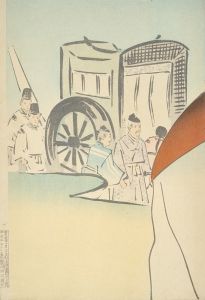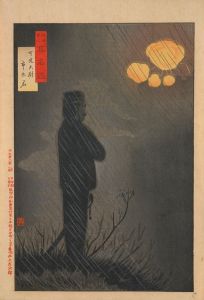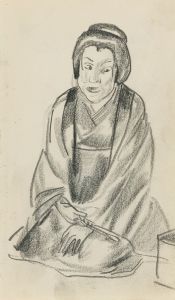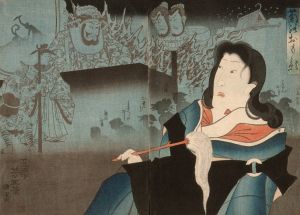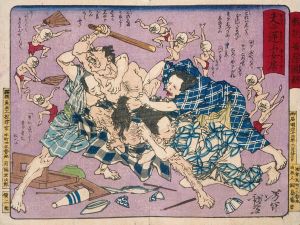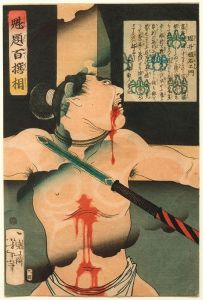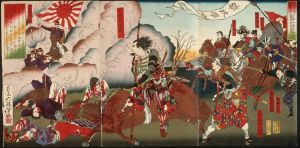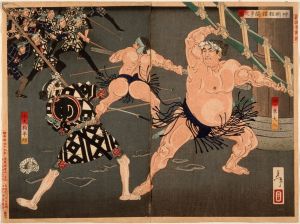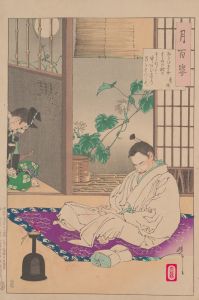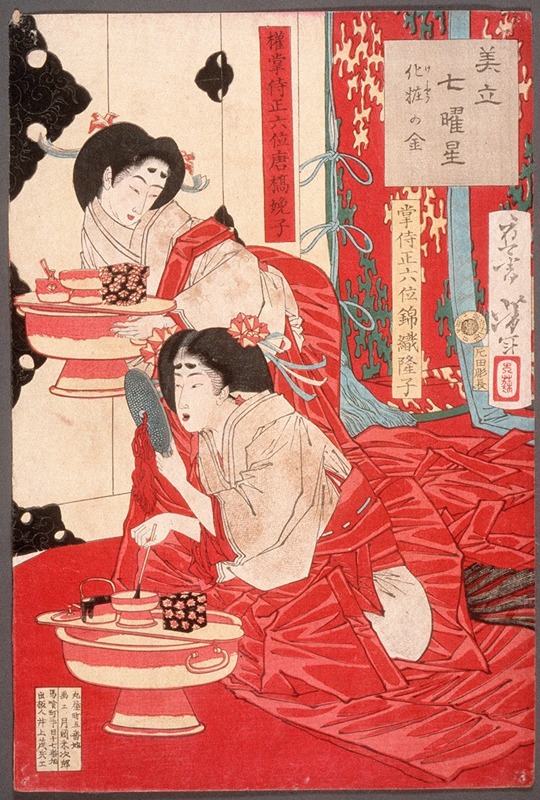
Metal for Tooth Blackening
A hand-painted replica of Tsukioka Yoshitoshi’s masterpiece Metal for Tooth Blackening, meticulously crafted by professional artists to capture the true essence of the original. Each piece is created with museum-quality canvas and rare mineral pigments, carefully painted by experienced artists with delicate brushstrokes and rich, layered colors to perfectly recreate the texture of the original artwork. Unlike machine-printed reproductions, this hand-painted version brings the painting to life, infused with the artist’s emotions and skill in every stroke. Whether for personal collection or home decoration, it instantly elevates the artistic atmosphere of any space.
"Metal for Tooth Blackening" is a woodblock print created by the renowned Japanese artist Tsukioka Yoshitoshi. Yoshitoshi, born in 1839 and passing away in 1892, is often celebrated as one of the last great masters of the ukiyo-e genre of woodblock printing and painting. His works are known for their dramatic intensity, innovative compositions, and the incorporation of Western techniques and perspectives.
This particular print, "Metal for Tooth Blackening," is part of Yoshitoshi's series "32 Aspects of Customs and Manners" (Fūzoku sanjūnisō), which was published in 1888. The series depicts women from various periods of Japanese history, each representing different customs, manners, and fashions. The prints in this series are notable for their detailed and expressive portrayal of women, capturing the essence of different eras and social statuses.
"Metal for Tooth Blackening" illustrates a woman engaged in the practice of ohaguro, a traditional Japanese custom of dyeing one's teeth black. This practice was common among married women, aristocrats, and samurai families during the Heian period (794-1185) and continued into the Edo period (1603-1868). Ohaguro was considered a sign of beauty and maturity, and it also served practical purposes, such as preventing tooth decay.
In the print, the woman is depicted holding a small metal pot, which contains the dye used for blackening the teeth. The process involved applying a mixture of iron filings, vinegar, and tannin to the teeth, which would result in a blackened appearance. Yoshitoshi's attention to detail is evident in the intricate patterns of the woman's kimono, the delicate features of her face, and the careful rendering of the tools used in the tooth-blackening process.
The background of the print is relatively simple, allowing the viewer to focus on the central figure and her actions. Yoshitoshi's use of color and shading adds depth and dimension to the image, highlighting the textures of the fabric and the sheen of the metal pot. The composition is balanced and harmonious, typical of Yoshitoshi's style, which often combines traditional Japanese aesthetics with influences from Western art.
"Metal for Tooth Blackening" is a testament to Yoshitoshi's skill as an artist and his ability to capture the cultural practices of his time. The print not only showcases the beauty and elegance of the subject but also provides insight into the historical customs of Japan. Through his work, Yoshitoshi has preserved a visual record of these traditions, allowing contemporary audiences to appreciate and understand the rich cultural heritage of Japan.
Today, Tsukioka Yoshitoshi's prints are highly valued by collectors and art historians alike. His work continues to be studied and admired for its artistic merit and its contribution to the documentation of Japanese history and culture. "Metal for Tooth Blackening" remains a significant piece within Yoshitoshi's oeuvre, exemplifying his mastery of the woodblock print medium and his deep engagement with the cultural practices of his time.






